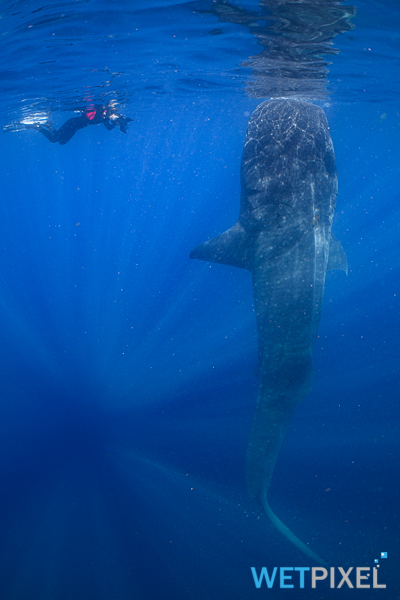Report: Wetpixel Whale Sharks 2019
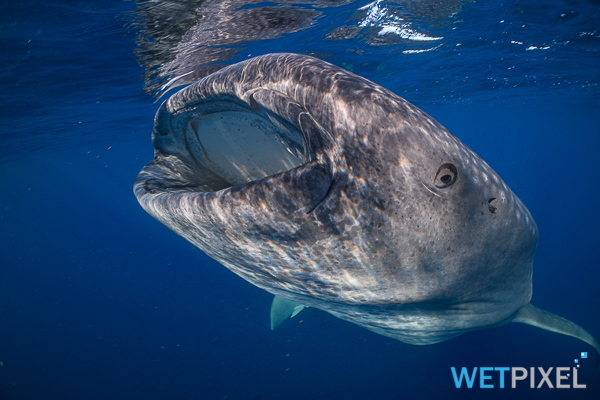
Wetpixel has been running trips to Isla Mujeres, Mexico since 2011 to witness and document the amazing whale shark (Rhincodon typus) aggregation that occurs here. Perhaps uniquely, this is an opportunity to join literally 100s of the world’s largest fishes as they feed on the plentiful plankton that abounds in the area. The bulk of this food is small transparent eggs from the bonito (Sarda sarda) that spawn at night in the area, providing a rich feast for the sharks.
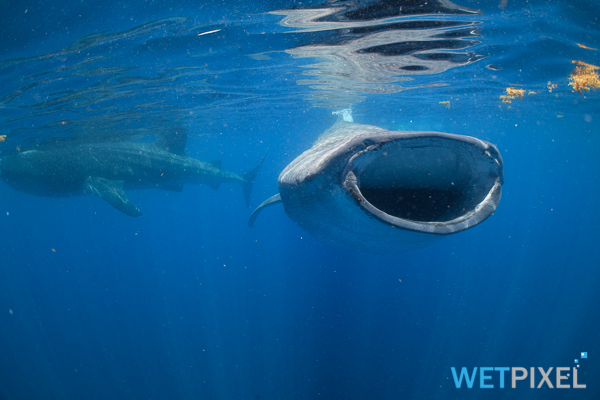
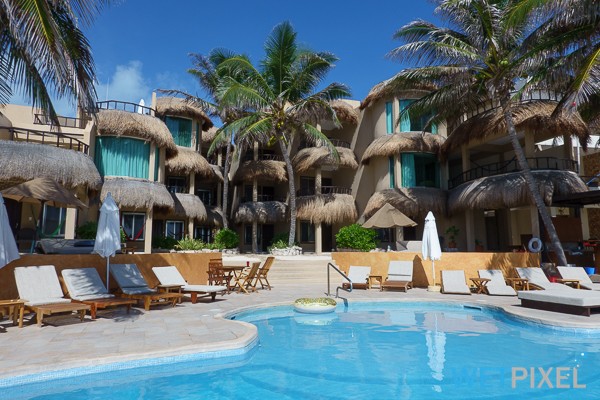
The trips follow a successful formula: We base ourselves in the very comfortable Playa la Media Luna hotel on Isla Mujeres and set out each day on Keen M’s boats to go and find sharks. Typically the aggregation is around one hour’s steaming North of the island.
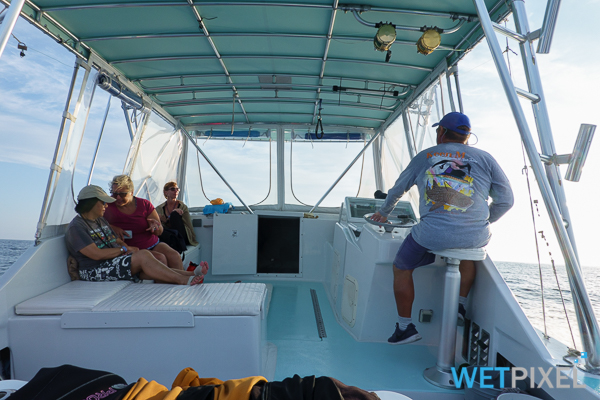
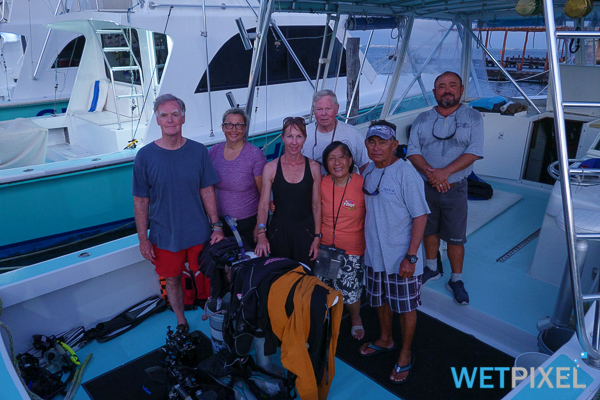
Our first trip for 2019 ran from 6 to 10 August, and we welcomed Li Westerlund, Patricia Dusman, Harry O’ Neil, Janette Tsang, and Geoff Fallon.
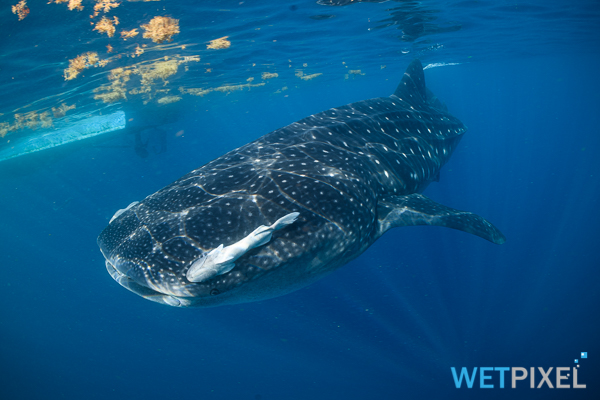
In part due to the success of our photographic trips over the years, “whale shark tours” are now very much a feature of tourism on Isla Mujeres. This has caused some environmental (and safety) concerns, and over the years, the Mexican government has sought to implement measures to try and control the way people interact with the sharks. The standard “tour” involves boats dropping their clients as close as possible to a shark, allow them to see it and swim with it for a short distance, and then come round and pick them up. This process gets repeated twice, and then the boats turn round and head back to Isla. This is not a productive method for those of us seeking to produce imagery of the sharks!

Perhaps predictably, the government has sought to regulate the event by deploying regulations that are aimed at the most significant tourist group and to try and ensure that the worst of the interactions are avoided.
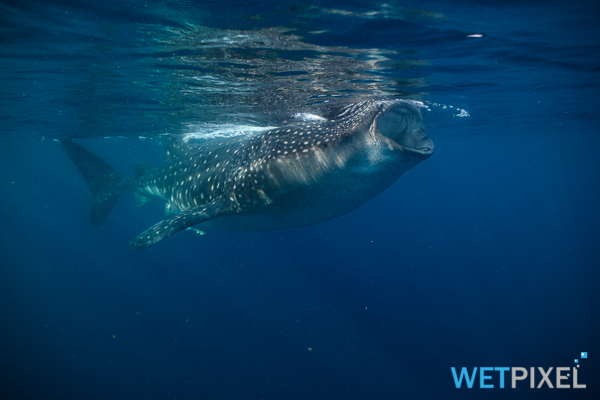
There has been a steady tightening of the regulations over the years. Indeed in 2018, each group needed to have a guide in the water and for there to be a maximum of 2 clients per guide. New for 2019 is a requirement to either hold an official PADI skin/free diving qualification or to wear a life jacket. Even this is complicated by the first option of reducing the guide: client ratio to 1:1.
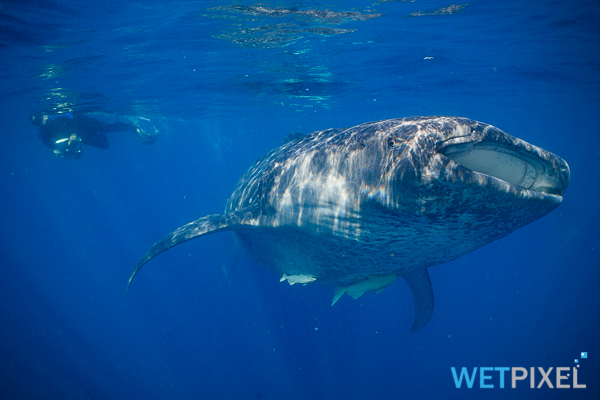
While it is easy to be very critical of these regulations, it does represent an attempt to control the way people interact with the sharks, with their best interests as a primary goal. Also, the whale shark tours produce a significant income for the locals, and this, in turn, makes them seek to protect the animals. The situation is a complicated one, and although I feel that many of the regulations are badly thought through, the key is to work within them.
As is typical of these trips, early starts are a must! The first and last few hours, when the majority of the boats have not arrived or have already left are very productive. We leave early and come back late, often sitting out the middle of the day when the majority of boats are around the sharks. This makes for long tiring days but provides fantastic imaging opportunities.

Our first day involved the team gathering for breakfast for 6, and us chatting through how the days would be structured. We then set off for the boat and were underway for around 7.15. Our boat, the Lilly M, is a 36 ft. Sportfishing boat, ably skippered by Rogelio and crewed by Juan.
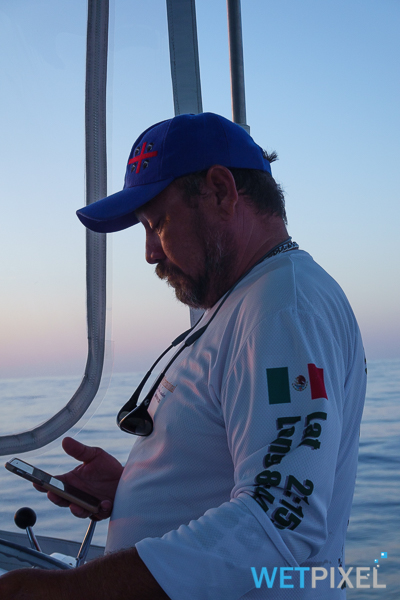
On our first day, there was a little wind, and there were some swells, so it was a little rougher than usual. There were also fewer sharks than average, and it was instructive to note that the “whale shark tour” boats were maneuvering very close to the sharks to drop their clients. Our team had a few gear problems and a little seasickness, so we headed back to port quite early, and went for a tour of the island.
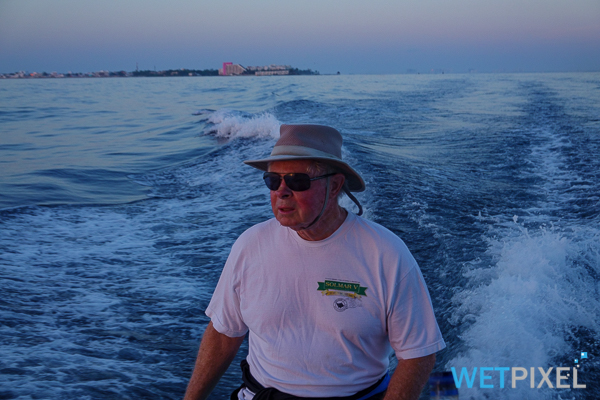
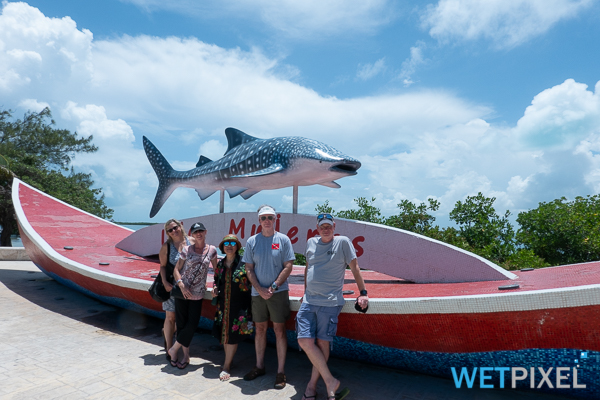
From day two onwards, we have been arriving at our boat at just after 6 am, and have been on our way by 6.15! Each day has brought more and more sharks, with an incredible density of sharks. This is especially true early in the morning, with us finding that we frequently had 5 or 6 sharks in the viewfinder at once.
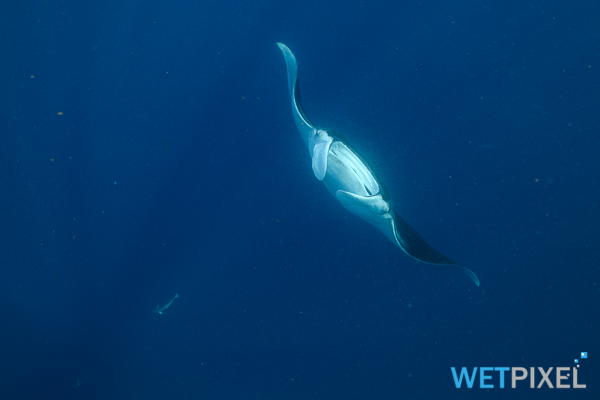
There are a few mantas around too, and many of the team also saw sailfish.

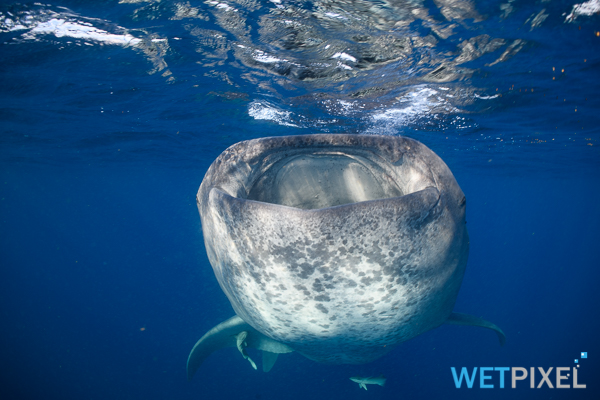
A feature of the aggregation is vertical feeding. The bonito eggs tend to float towards the surface so the majority of the time, the sharks are swimming along, with their mouths open and forcing the egg abundant water past filtering pads that cover the entrances to their throats. The pads have millimeter-wide pores that act like a sieve, allowing water through and out of their gill slits, while retaining the food. (Despite being known as tiburón ballena in Spanish, whale sharks do not have baleen plates like “true” whales.)
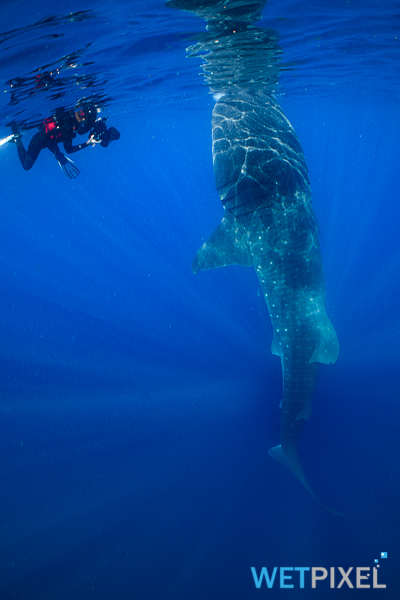
When the sharks encounter a particularly rich (or some suggest poor) patch of food, they switch to feeding via suction. By opening and closing their mouths, they physically draw water into their throats by creating suction. Given that they are feeding on eggs at the surface, when they stop swimming, their tails sink, and they assume a vertical position in the water.
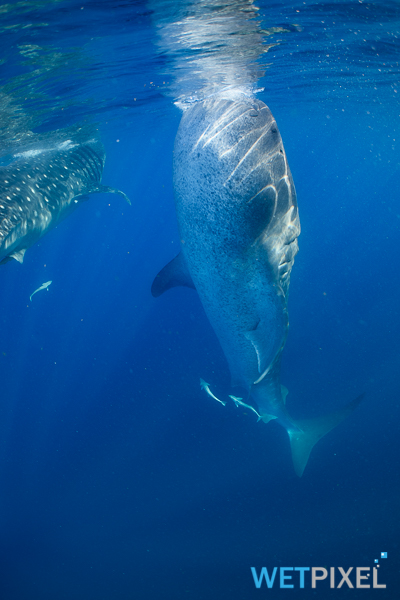
This is known locally as a “botella” as they look like bottles bobbing in the water. From the surface, the behavior can be recognized by a big patch of white (which is the shark’s light-colored throat), and the bubbles and swirls as the shark draws water into its mouth.
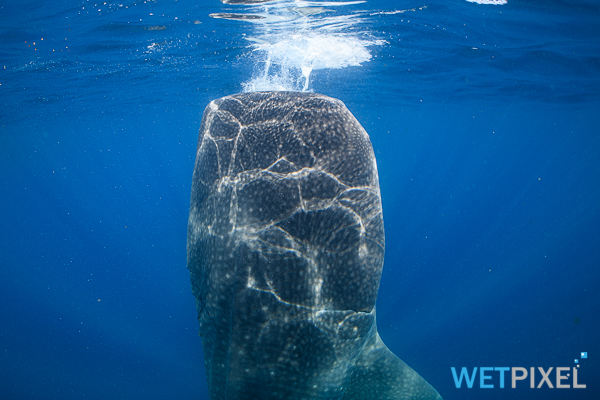
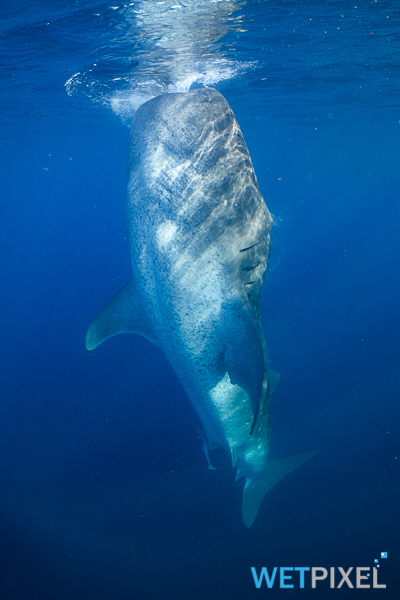
If approached carefully, when sharks are in this state, they will continue to feed despite the close proximity of the divers.
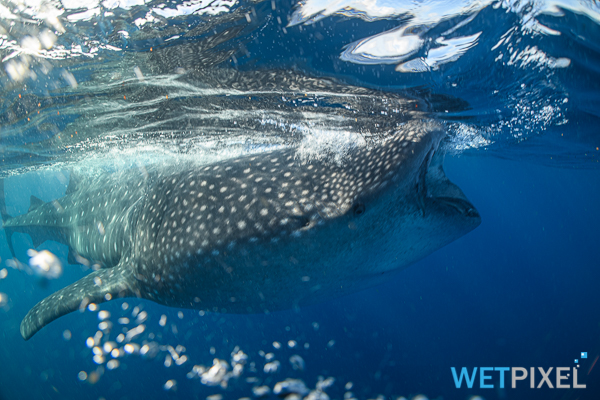
Each day this week produced ever-increasing numbers of sharks, photographically this allows for experimentation and trying out different ideas. The whole group was able to review their images and shoot to specifically eliminate (or create) effects.
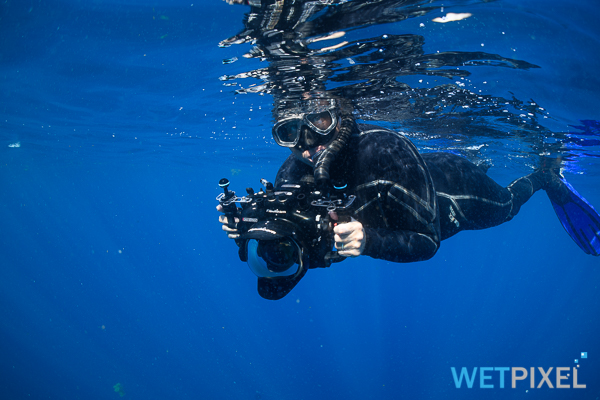
Typically the best times were the early mornings, and then later on, as the majority of the boats had left by around 12. We did have one day when the action was pretty thick until approximately 11:30 when the sharks dived down.
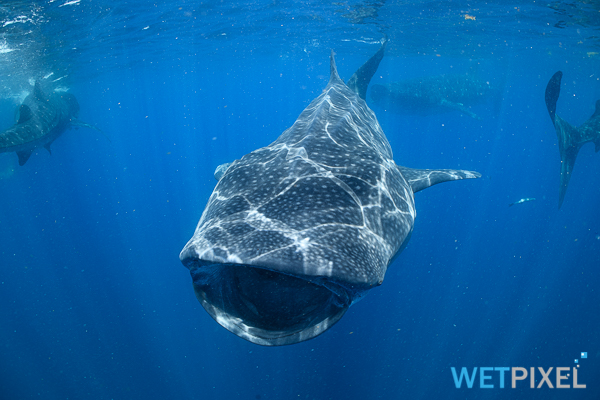
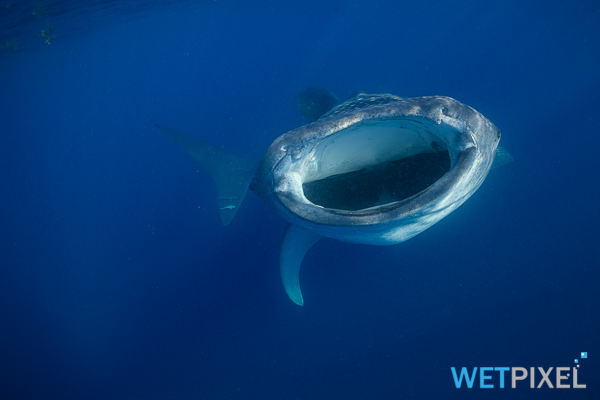
Another unusual new behavior was vertical and horizontal feeding in mid-water. Given that bonito eggs seem to float, this seems counter-intuitive. A possible reason may be that there is another species spawning, with less buoyant eggs?
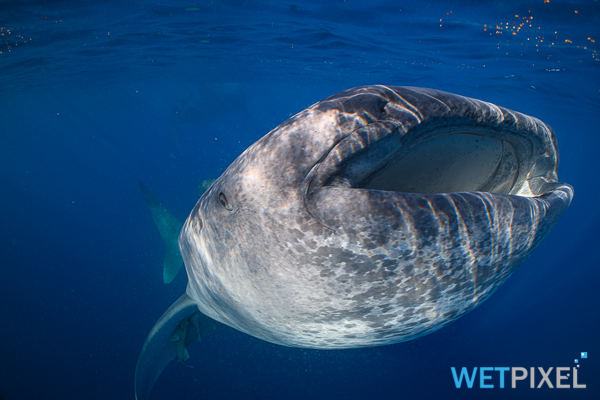
It certainly makes for another interesting perspective.

Trips like this are also about exploring new places, and with a group of talented photographers like this group, it is inevitable and very welcome that very creative energy builds. Every boat ride, meal, and “surface interval” saw us swapping notes, observations and ideas.

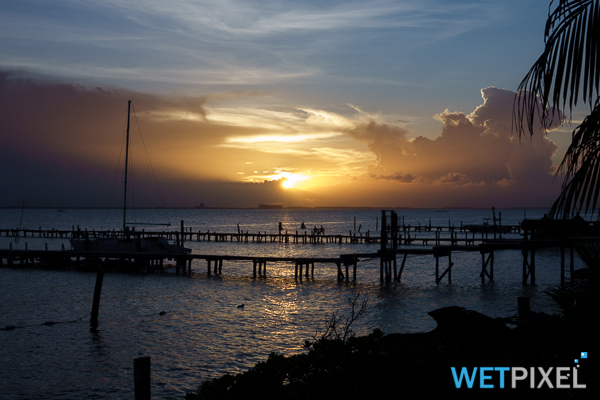
It is very sad to wave goodbye to our first group today, but also very exciting to welcome our second group. Looking forward to lots more whale shark action over the next five days, all of which will be reported on here! Please check back soon.
